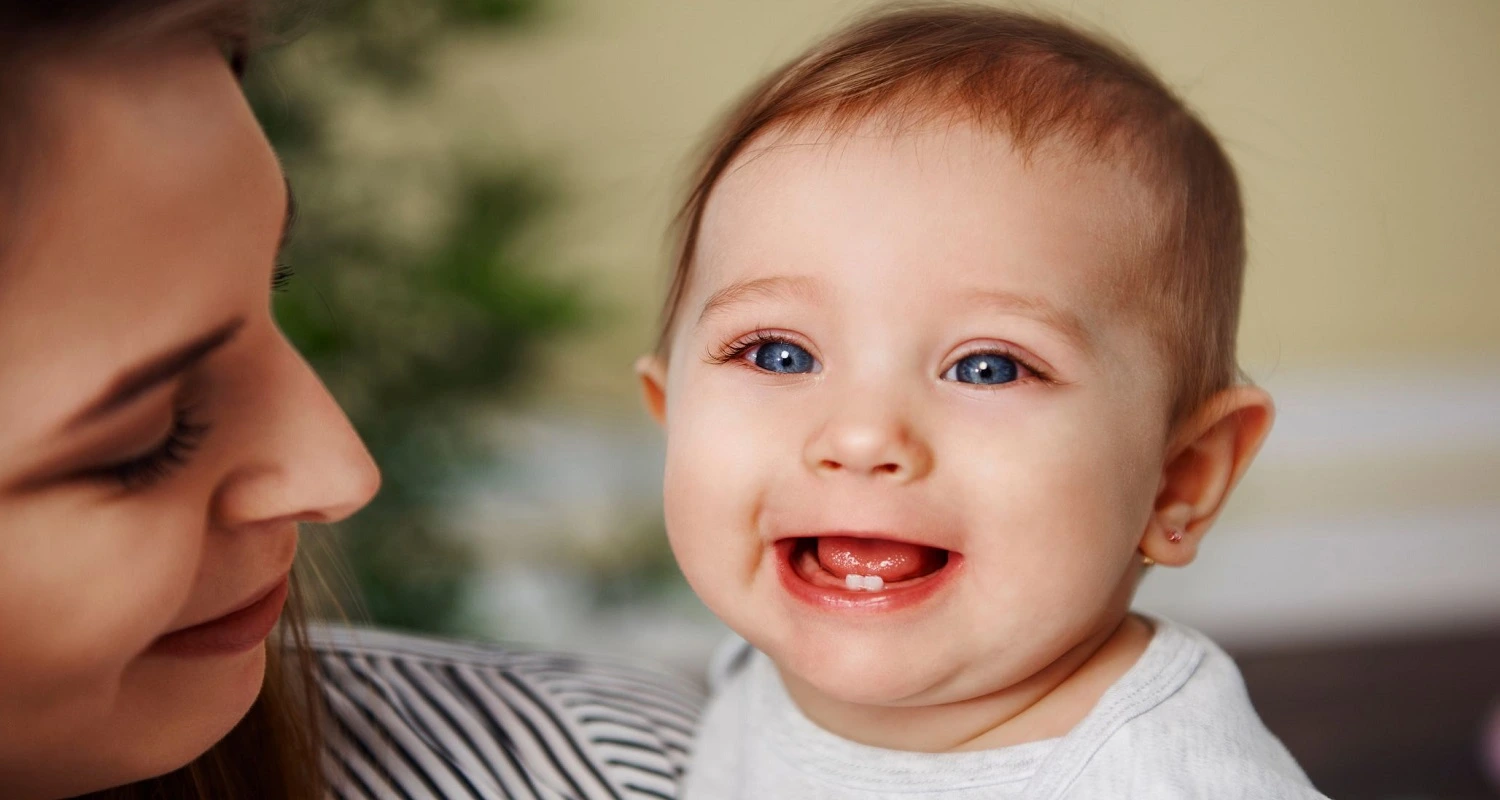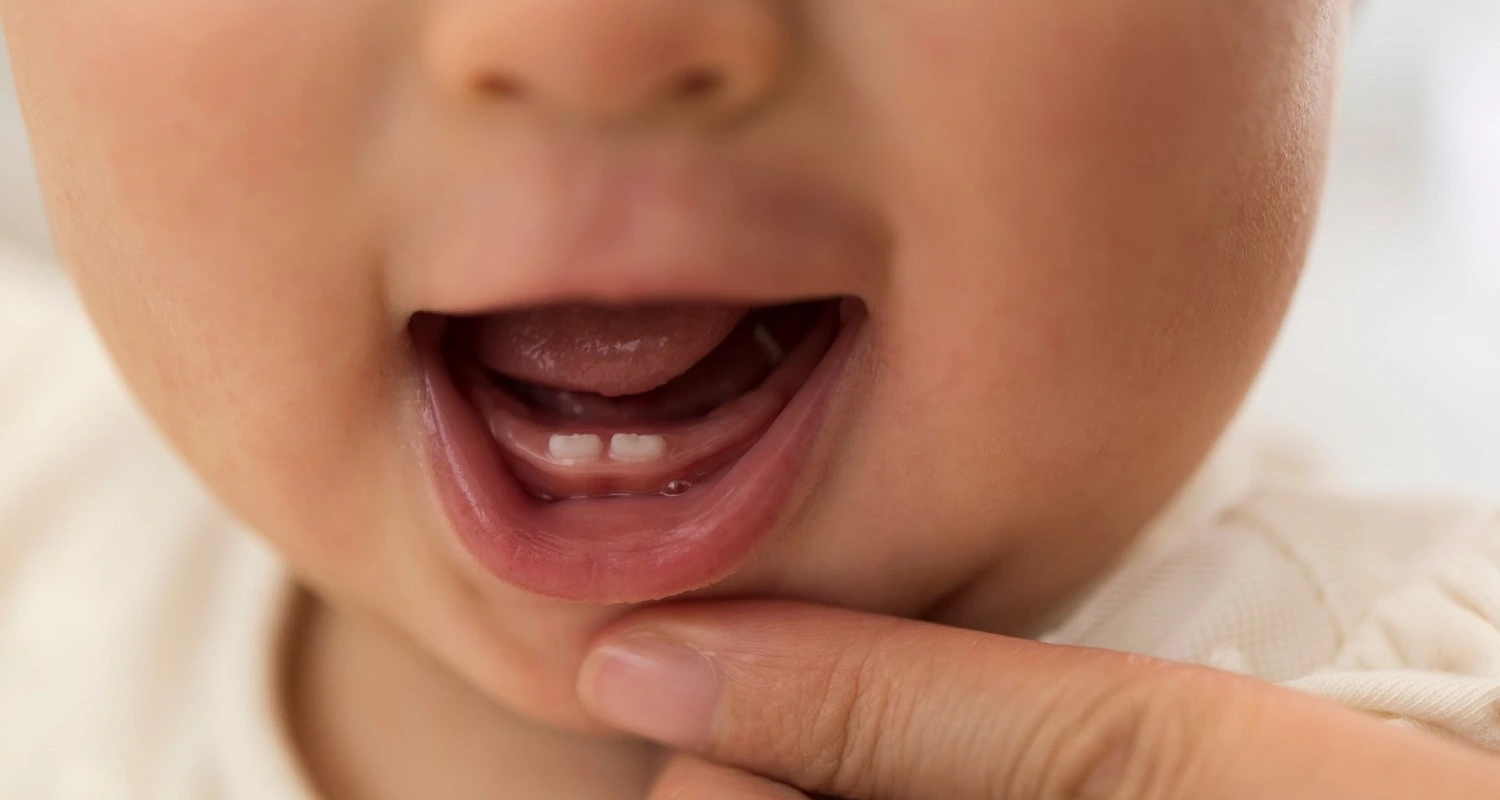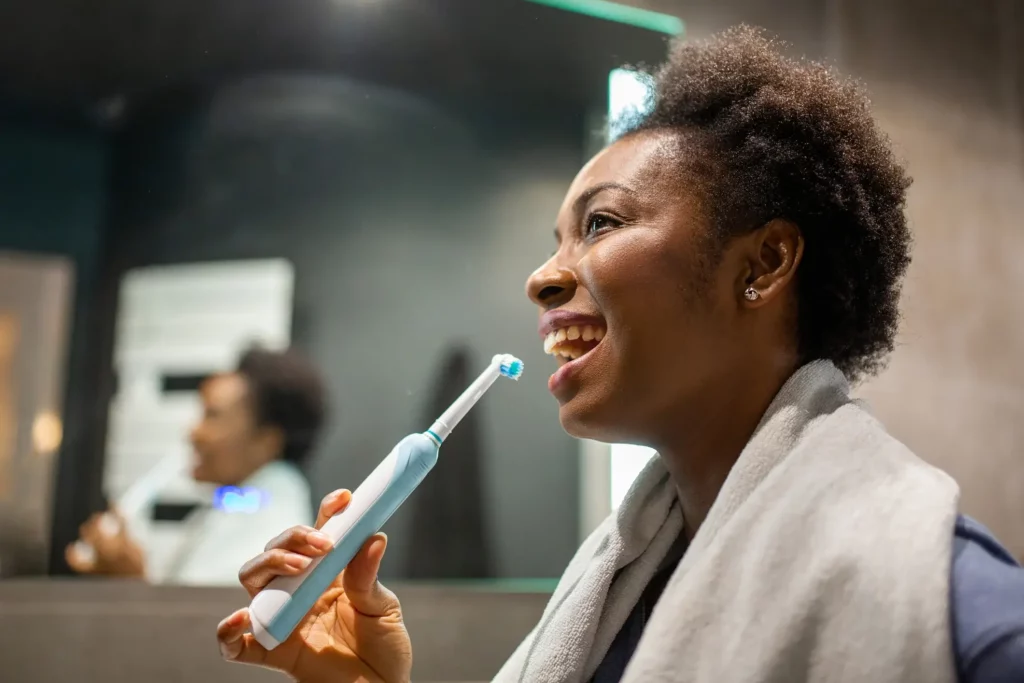In the world of newborns, a unique and uncommon occurrence occasionally takes place – babies being born with teeth. Known as natal teeth, this phenomenon can be both intriguing and unexpected for parents and caregivers alike.
The arrival of a baby at home is always an event of joy and surprise for families, especially for the parents; however, some babies come into the world accompanied by something else that they do not expect – for example, TEETH.
What are Natal Teeth?
Natal teeth are relatively rare anomalies in babies. Despite not being life-threatening, they can cause feeding problems, ulcerations due to trauma by rubbing the tooth against the gums or cheeks, and concern about aspiration, since these teeth can fall out without the parents noticing.
These teeth generally appear in the lower gum, where the front teeth (central incisors) will be later on. They are attached to the edge of the gum by soft tissue, so they can fall out without anyone noticing and the baby can aspirate it. They are usually not well formed, which can cause discomfort for the mother during breastfeeding.
Why are Some Babies Born with Teeth?
Despite being rare, natal teeth are not generally correlated with any disease; however, they may be associated with:
● Ellis-Van Creveld Syndrome: This hereditary syndrome is characterized as affecting bone growth. It is also known as chondroectodermal dysplasia.
● Hallermann-Streiff Syndrome: This syndrome is characterized by abnormalities in the bones of the skull, facial bones, sparse hair, as well as degenerative skin changes.
● Cleft lip and palate: These birth defects affect the upper lip and palate.
● Pierre Robin Syndrome: This is a condition in which the baby has a smaller-than-normal jaw, a receding tongue, and difficulty breathing.
● Sotos Syndrome: This syndrome of genetic origin is characterized by excessive growth during intrauterine and postnatal life, accompanied by motor, cognitive and social retardation.
What does Natal Teeth Look Like?
The appearance of natal teeth can vary since they are not associated with the normal formation and eruption of the temporary dentition. There are different types:
● Loose teeth: They look like they are placed on the gums, but are only attached by a little soft tissue, so they tend to fall off easily.
● Size and shape: Neonatal teeth do not have a “normal” shape, and their size is generally small.
● Dental enamel: The outer layer of the tooth is generally shiny and smooth. is usually little or no (hypoplasia).
● About to erupt: These teeth can still be seen within the gums; however, they are not called natal teeth but neonatal teeth, which, unlike the natal tooth that is already in the mouth when the baby is born, this type comes out during the first 30 days of life.
If your child experiences a teething rash as their tooth is about to erupt, you can refer to this article for more information.
Like the natal tooth, it does not present a risk to the life of the baby.
In general, babies born with teeth are only born with a few, although 2 or 3 teeth may be present. Likewise, the most common is the lower teeth, but there may be cases where the upper teeth and molars are also present to a lesser extent than the lower ones.
Natal teeth, rare in-born teeth, are linked to potential dental issues. Though not directly causing crooked teeth, they heighten misalignment risks. They may disrupt oral dynamics during feeding, affecting tongue placement and leading to unfavorable dental alignment.
If not aligned well, they can create uneven pressure, impacting permanent teeth alignment. Early monitoring and dental care are vital to ensure proper oral development for infants with natal teeth.
What are the Possible Complications of Natal Teeth?
As already mentioned, natal teeth do not represent a health hazard; however, if they occur, some complications are:
● Aspiration: If the natal teeth are very mobile, they can fall out spontaneously; therefore, the baby runs the risk of swallowing it (aspiration). The chances are very low, but when inhaled, it can obstruct the airways.
● Feeding: The natal teeth can cause discomfort to both the mother and the baby at the time of lactation. In some cases, the baby may present ulcers on the tongue associated with rubbing the tooth against it, making feeding difficult and painful.
● Dental crowding: If the natal tooth remains in the mouth, it is considered supernumerary; in this case, the “normal” teeth can move or crowd around it.
● Caries: Caries can occur in these teeth since they do not have their outermost layer (enamel). As mentioned, one of the characteristics of these teeth is that they have very little to no enamel (hypoplasia). Therefore, in the absence of this layer, the tooth is more exposed to the accumulation of plaque and the appearance of caries.
What to do with the Native Teeth
Although the native teeth do not represent any problem for the baby, it is important to keep them under control by a doctor and pediatric dentist. If the teeth have roots and are not loose (as in most cases), they can remain in the mouth under observation by the pediatric dentist.
If the tooth has a strange or pointed shape, you can choose to relieve or smooth the edges with resin to prevent the baby from hurting himself or the mother’s breast when breastfeeding.
In the case of mobility or if the teeth are loose, it is better to extract them to avoid being aspirated by the baby. This procedure is straightforward. Depending upon the mobility of the tooth, the dentist can extract it only with gauze. Note: it is not necessary to use topical anesthesia.
In any of these cases, it is best to take an X-ray to determine the most appropriate treatment plan.
Brushing natal teeth is vital for early oral care. These teeth, present at birth or shortly after, need gentle cleaning to prevent plaque and maintain hygiene. Caregivers can use a soft toothbrush or damp cloth for brushing and gum massage. A small amount of water or non-fluoride toothpaste is recommended.
Regular and gentle brushing establishes good oral habits, supporting proper dental care as the child’s teeth develop. Pediatric dental check-ups offer insights into optimal infant oral health.
For more information on when to begin brushing a baby’s teeth, you can refer to this article.
Conclusion
• It is important to understand that natal teeth, despite not being so common, do not represent any danger to the health or life of the baby.
• There is no definitive cause for neonatal teeth; however, they may be associated with other pathologies such as Ellis-Van Creveld syndrome or Streiff syndrome.
• Cases should always be treated by a doctor and pediatric dentist.
Frequently Asked Questions
What happens if a baby is born with teeth?
When a baby is born with teeth, known as natal teeth, it can cause discomfort during breastfeeding for both the baby and the mother. Additionally, some infants may develop a condition called traumatic lingual ulceration, or Riga-Fede disease, which is often linked to natal teeth in the lower front part of the mouth (lower incisors).
What does it mean if a baby gets teeth early?
In rare instances, some babies are born with one or two teeth or have a tooth emerge within the first few weeks of life. Generally, this is not a cause for concern unless the teeth interfere with feeding or are loose enough to pose a choking hazard. If either of these issues arises, it’s important to consult a pediatrician or dentist for guidance.
How to remove neonatal teeth?
Extraction of neonatal teeth can often be performed using just topical anesthetic cream due to the poor root development. Before extracting the tooth from a neonate under the age of 10 days, it’s important to assess vitamin K levels or administer a prophylactic vitamin K injection. Extraction may be considered if the tooth is supernumerary or causing issues.
How often are babies born with teeth?
Natal teeth, while initially concerning, occur in about 1 out of every 2,000 births. Certain conditions can increase the likelihood of a baby being born with teeth, such as a cleft palate or lip. Additionally, other conditions like Sotos syndrome may also contribute to the presence of natal teeth at birth.
Share:
References
1. M. Miegimolle Herrero, PP (January 02, 2002). Pediatric dentistry. Retrieved from Early childhood care: natal and neonatal teeth: https://www.odontologiapediatrica.com/wp-content/uploads/2018/05/24_5.-M.-Miegimolle.pdf
2. medigraphic. (January 1, 2016). ADM Magazine. Retrieved from Management of natal and neonatal teeth. A report of two cases.: https://www.medigraphic.com/pdfs/adm/od-2016/od162h.pdf
3. National Library of Medicine. (January 24, 2022). MedlinePlus. Retrieved from Natal teeth: https://medlineplus.gov/spanish/ency/article/003268.htm
4. Souza ACRA, NC (October 01, 2011). Advances in odontostomatology. Retrieved from Neonatal teeth: A case report and review of literature: https://scielo.isciii.es/scielo.php?script=sci_arttext&pid=S0213-12852011000500005
5. STANFORD MEDICINE CHILDREN’S HEALTH. (January 1, 2021). STANFORD MEDICINE CHILDREN’S HEALTH. Retrieved from Anatomy and development of the mouth and teeth: https://www.stanfordchildrens.org/es/topic/default?id=anatomyanddevelopmentofthemouthandteeth-90-P04975 https://www.odontologiapediatrica.com/wp-content/uploads/2018/05/24_5.-M.-Miegimolle.pdf
-
Nayibe Cubillos M. [Author]
Pharmaceutical Chemestry |Pharmaceutical Process Management | Pharmaceutical Care | Pharmaceutical Services Audit | Pharmaceutical Services Process Consulting | Content Project Manager | SEO Knowledge | Content Writer | Leadership | Scrum Master
View all posts
A healthcare writer with a solid background in pharmaceutical chemistry and a thorough understanding of Colombian regulatory processes and comprehensive sector management, she has significant experience coordinating and leading multidisciplina...

















